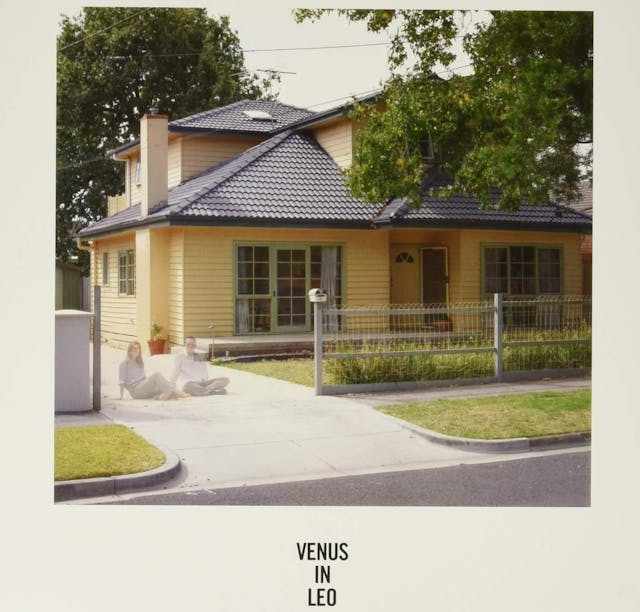Noah Brier | September 13, 2019
Why is this interesting? - The Creative Systems Edition
On creativity, systems, and how to make them work better together
Recommended Products

A primer on systems thinking that explains the relationship between structure and behavior, helping to understand how systems work, what makes them produce poor results, and how to shift them into better behavior patterns.

The newest album by HTRK, an Australian band signed to Sam Valenti’s Ghostly label, known for their dark atmospherics, great songwriting, and some occasional feral swagger.
Noah here. For awhile now I’ve been trying to preach the gospel of systems thinking to marketers at both brands and agencies. The gist of the pitch is that creativity, the job most marketers want to believe they have, and systems aren’t actually at odds. On the contrary, for creativity to function in a business context it has to be buttressed by systems of one kind or another: Whether they’re the brand guidelines that dictate the aesthetics and tone, the industry’s norms, both legal and otherwise, or the structure of culture, however hard that can sometimes be to determine. The job of creativity in the context of brands is to find a way to communicate relevant information (whatever that might be) to people in a way that makes them take notice.
The point is that this doesn’t happen in spite of systems but because of them. Theresa Amabile, one of the leading researchers of organizational creativity, defines the word as, essentially, novelty with constraints. The difference between art and advertising, in other words, is the existence of systems to constrain the output. No matter how much you want to redesign the Coke logo for that campaign you’re working on, that’s probably not an option.
Why is this interesting?
Maybe it’s the company I keep, but it feels like the industry is slowly embracing the systems truth. One example that pops to mind is a new approach called product-led growth (PLG) that’s sweeping the technology world. PLG still represents a hodgepodge of different ideas about how some of the fastest technology companies (Slack, Zoom, Atlassian, etc.) are growing today by merging product, sales, and marketing in interesting ways. While the definition may still a little murky, it’s clear that there’s a systems approach to marketing that sits at the center. The idea, effectively, is that if you’ve got a digital product, you can use the signals that come from it to trigger marketing both inside the interface and outside, that helps drive purchase, upsell, and retention. Think of how Slack notifies you as you approach your free message limit, trying to upsell you into a paid plan.
On the more analog side, one of my favorite examples of a brand using a systems approach to creativity came from a collaboration between Heineken and the folks at Contagious called the “creative ladder”. The idea was simple: Create a structure around creative feedback that helped drive both consistency and risk-taking by getting everyone on the same page about what they are really feeling when they see new creative work. It did this by offering a kind of controlled vocabulary that could help them better articulate how they felt when they saw something (each of the levels in the ladder below had detailed definitions behind them).

Cinzia Morelli-Verhoog, one of the marketing leaders at Heineken, explained it like this:
If you want great creativity you need to be able to talk about it and to give it a language, because more often than not, creativity is very subjective, it has a lot to do with gut feelings, and the experience and legacy of the different individuals. By introducing the creative ladder we created a language within Heineken. For example, ‘cliché creativity’ is level number four of our ladder, so anything that is ‘cliché’ is a creativity of a kind that we don’t consider makes any impact.
While I have no idea whether it’s really worked or even still in use at Heineken, the idea that creativity can be codified in any regard seems like a positive step to me. As Donella Meadows, who literally wrote the book on systems thinking, explains, “Once we see the relationship between structure and behavior, we can begin to understand how systems work, what makes them produce poor results, and how to shift them into better behavior patterns.” It is a way of thinking that gives us the freedom to identify root causes of problems and see new opportunities.” It’s nice to see my former (and present-ish) industry of advertising and communications making small steps in this direction. (NRB)
Record of the Day:
HTRK is an Australian band I’m obsessed with, signed to Sam Valenti’s Ghostly label. They were brilliantly described as sounding like “Sade in prison,” which is a line I wish I wrote back when I wrote a lot about music. They offer dark atmospherics, great songwriting, and some occasional feral swagger. Plus, to get a sense of who they are, a Doha-jetlagged press interview to die for. Give a listen to one of my favorite tracks from an earlier album here, or go buy the new album here. (CJN)

Quick Links:
The most innovative architecture and urban design of 2019. (CJN)
From friend of WITI, RPB: Turns out hits really contribute to the bottom line in mass-market fashion. According to the FT, a £39.99 polka-dot dress from Zara was so popular this summer that it had its own Instagram account. (CJN)
How to brief for the unknowable, from WITI contributor Nick Parish, remains an excellent read. Bonus cameo from another WITI contributor, Brady Moore. (CJN)
Since we’re talking about systems and marketing, I’m re-upping this link from earlier in the week: The Article Group’s 2019 Essential Frameworks Guide. (NRB)
Thanks for reading,
Noah (NRB) & Colin (CJN)
Why is this interesting? is a daily email from Noah Brier & Colin Nagy about interesting things. If you’ve enjoyed this edition, please consider forwarding it to a friend. If you’re reading it for the first time, consider subscribing (it’s free!).